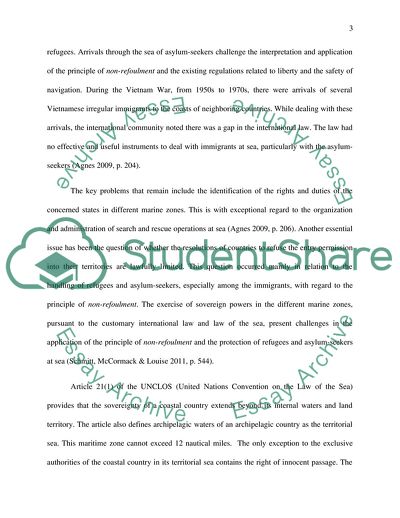Cite this document
(The Principle of Non-Refoulement at SEA and the Asylum-Seekers Essay, n.d.)
The Principle of Non-Refoulement at SEA and the Asylum-Seekers Essay. https://studentshare.org/law/1771052-assess-the-principle-of-non-refoulement-at-sea-and-the-effectiveness-of-asylum-protection
The Principle of Non-Refoulement at SEA and the Asylum-Seekers Essay. https://studentshare.org/law/1771052-assess-the-principle-of-non-refoulement-at-sea-and-the-effectiveness-of-asylum-protection
(The Principle of Non-Refoulement at SEA and the Asylum-Seekers Essay)
The Principle of Non-Refoulement at SEA and the Asylum-Seekers Essay. https://studentshare.org/law/1771052-assess-the-principle-of-non-refoulement-at-sea-and-the-effectiveness-of-asylum-protection.
The Principle of Non-Refoulement at SEA and the Asylum-Seekers Essay. https://studentshare.org/law/1771052-assess-the-principle-of-non-refoulement-at-sea-and-the-effectiveness-of-asylum-protection.
“The Principle of Non-Refoulement at SEA and the Asylum-Seekers Essay”. https://studentshare.org/law/1771052-assess-the-principle-of-non-refoulement-at-sea-and-the-effectiveness-of-asylum-protection.


